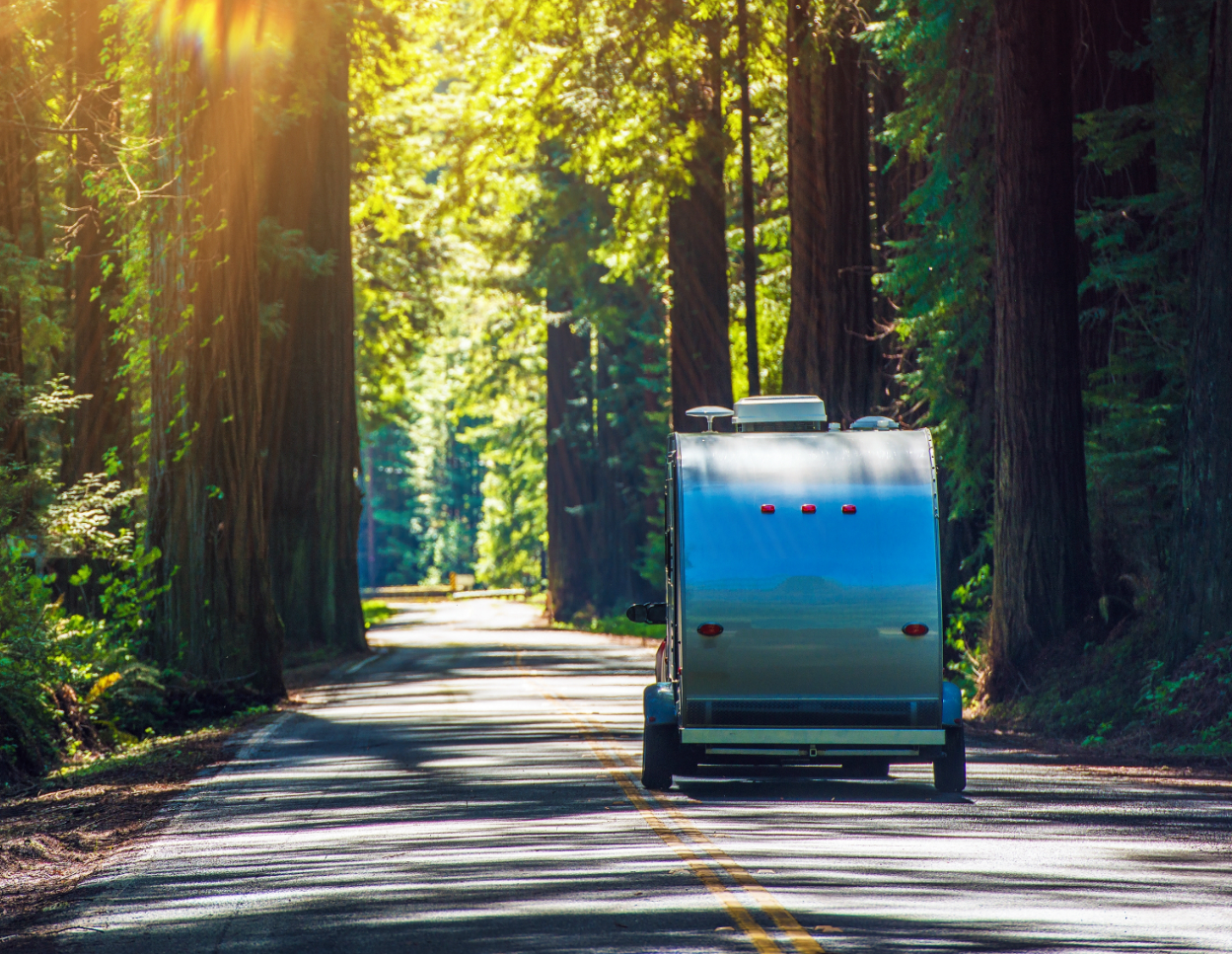Hitting the road for a tent or RV camping roadtrip is a thrilling adventure that allows you to connect with nature, discover new landscapes, see out-of-the-way, backroads towns, and fill your photo library with lasting memories.
Whether you’re a seasoned camper or a novice explorer, planning is key to ensuring a successful journey with as few hiccups as possible. Below are some tips to follow – or hogwash to quash – when planning your adventure…
Choosing your destination. The first step in planning a camping road trip is deciding on your destination. Consider your interests, the time of year, and the distance you’re willing to travel. Do you prefer the serene tranquility of the mountains, the calming sounds of the ocean, or the excitement of a national park? Research the campgrounds in your chosen area and make reservations if necessary, especially during peak seasons. Sometimes.
We’ll almost always book our campgrounds along the way,
Create a detailed itinerary. Once you’ve chosen your destination, create a detailed itinerary for your road trip. Plot out your route, noting the distance between campgrounds and interesting stops along the way. Factor in driving time and rest breaks to ensure a comfortable journey. Flexibility is essential, so leave room for spontaneous detours and unplanned adventures.
Navigation tools. Carry navigation tools like maps, a GPS device, or a smartphone with a reliable offline map app to avoid getting lost.
Vehicle maintenance. Before hitting the road, it’s crucial to ensure that your vehicle is in excellent condition. Schedule a thorough inspection, checking the brakes, tires, oil, and other essential components. Make sure you have a spare tire, jack, and the necessary tools for minor repairs. A well-maintained vehicle will reduce the risk of breakdowns during your trip.
Packing essentials. Packing efficiently is essential for a camping road trip. Create a checklist of essential items, including clothing, food, and camping gear. Be mindful of weight limits and storage capacity. When packing clothes, consider the weather conditions at your destination and bring versatile layers. Don’t forget essentials like toiletries, first-aid kits, and any necessary prescription medications.
As for camping gear, consider these accessories…
Tent. Invest in a high-quality, weather-resistant tent that suits your group size. Look for easy setup and durability to ensure a comfortable night’s sleep.
Sleeping bag. Choose a sleeping bag appropriate for the climate. Look for features like insulation, temperature ratings, and packability to find the right fit.
Food planning. Plan your meals ahead of time to make cooking at the campsite more manageable. Choose easy-to-cook and packable foods like canned goods, pasta, and instant oatmeal. Don’t forget to bring essentials like cooking oil, spices, and utensils. If you plan to fish or forage, research local regulations and bring the necessary equipment.
Camping stove. A portable camping stove is essential for cooking meals and boiling water. Opt for a reliable, fuel-efficient model that suits your cooking needs. Remember a multi-tool/knife, a handy for various tasks, from cooking to minor repairs. Campfire Cooking Utensils: Don’t forget cooking utensils like pots, pans, spatulas, and utensils for preparing delicious campfire meals.
Cooler. Keep your food fresh and drinks cold with a reliable cooler. Look for one with good insulation and size appropriate for your group’s needs.
Camp chairs. Comfortable camp chairs are a game-changer for relaxing around the campfire. Choose lightweight, foldable chairs for easy transport.
Headlamp/flashlight. Illuminate your campsite with a headlamp or flashlight. These are essential for nighttime activities and safety.
Safety precautions. Safety should always be a priority during your camping road trip. Pack a first-aid kit with essentials like bandages, antiseptic wipes, and pain relievers. Familiarize yourself with the local wildlife and any potential hazards in your chosen destination. Follow Leave No Trace principles to minimize your environmental impact.
Entertainment. While nature is the main attraction, having entertainment options can enhance your camping experience. Bring books, board games, musical instruments, or binoculars for birdwatching. These activities can provide enjoyment during downtime or in case of bad weather.
Leave No Trace. Responsible camping is crucial for preserving our natural resources. Familiarize yourself with the Leave No Trace principles, which include disposing of waste properly, minimizing campfire impact, and respecting wildlife and other campers. Leave your campsite as you found it to ensure the beauty of nature remains for future generations.
Enjoy the journey. The destination isn’t necessarily the point of the adventure. A camping roadtrip is not just about the destination but also the journey itself. Embrace the unexpected and savor the moments along the way. Take photos, journal your experiences, and create lasting memories with your fellow travelers.
Planning a camping roadtrip requires careful consideration and preparation. From choosing your destination and creating an itinerary to packing the right gear and following safety precautions, a well-thought-out plan will ensure a memorable and enjoyable adventure. So, gear up, hit the road, and embrace the beauty of nature on your next camping road trip.
